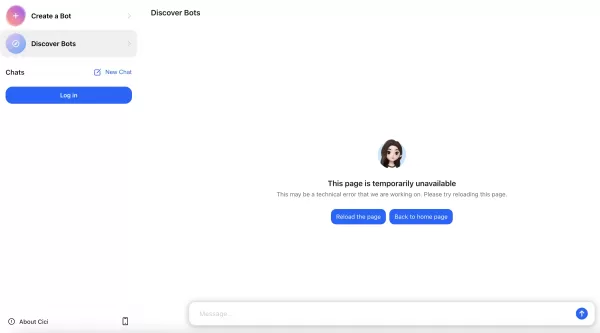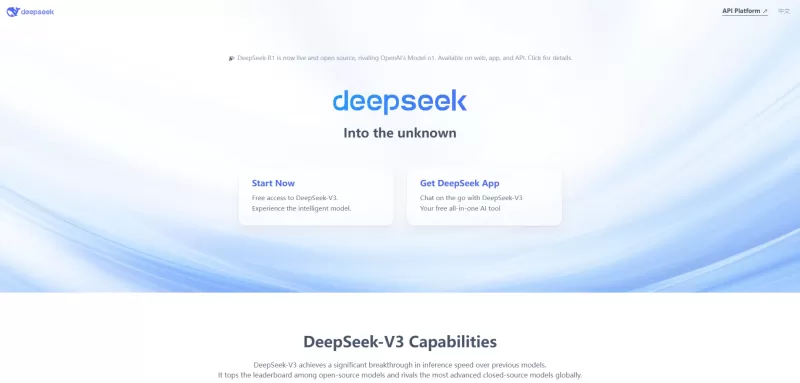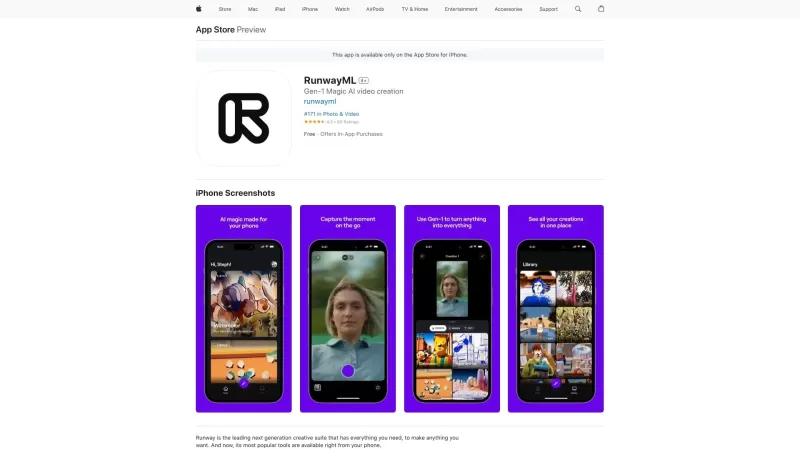AI-Powered Vibe Coding: Revolutionizing Software Development's Future
In March 2025, a revolutionary concept known as vibe coding took the programming world by storm. This idea, coined by the former OpenAI researcher Andrej Karpathy, encourages developers to immerse themselves in the creative process, letting AI handle the nitty-gritty of coding. Vibe coding is reshaping how software is developed by leveraging advanced AI tools to streamline the process. But what exactly is vibe coding, and how can developers make the most of it? Let's dive into this innovative approach, its key players, essential tools, and the rules that ensure its success.
Understanding Vibe Coding and Its Origins
What is Vibe Coding?
Vibe coding, a term brought into the spotlight by Andrej Karpathy, marks a significant shift in software development. It's all about embracing an intuitive, AI-assisted method where developers focus on the big picture, leaving the detailed coding to AI. This approach emphasizes the creative process, allowing developers to trust AI tools to translate high-level ideas into functional code. The goal? To minimize the gap between conceptualizing and executing, enabling faster and more efficient innovation.
The heart of vibe coding lies in harnessing AI to its fullest, freeing developers from mundane tasks and allowing them to concentrate on strategic thinking and problem-solving. It creates a synergy between humans and AI, making the development process more intuitive and streamlined. Unlike traditional coding, which focuses on meticulous syntax and manual debugging, vibe coding relies on the intelligence of AI to generate and refine code. It's not just about writing code; it's about using AI to build software that aligns with a developer's vision, making software creation faster, more accessible, and more enjoyable.
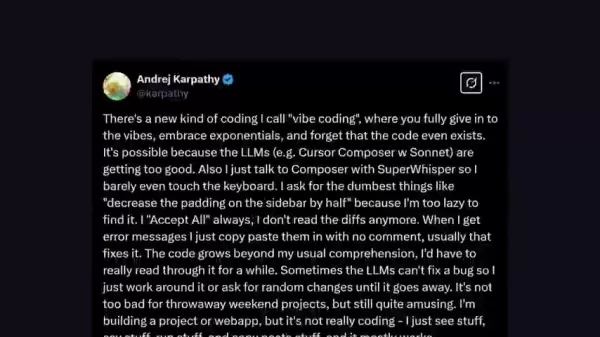
The Rise of Vibe Coding in 2025
In March 2025, the programming world witnessed a surge in the adoption of vibe coding, driven by advancements in AI technology and the increasing availability of AI-powered tools. This wasn't just a fleeting trend; it was a fundamental shift in software development and maintenance.
Several factors fueled this rapid adoption:
- Improved AI Capabilities: AI models became more sophisticated, capable of generating optimized, functional code. Tools like Cursor and Bolt significantly reduced the need for manual coding.
- Accessibility of AI Tools: AI development platforms became more user-friendly, making vibe coding accessible to developers of all skill levels.
- Increased Productivity: Developers found that vibe coding boosted their productivity by automating repetitive tasks and minimizing debugging time, allowing them to focus on more creative aspects of development.
- Growing Community Support: A vibrant community of vibe coders emerged, sharing best practices, tools, and insights, which fostered rapid learning and innovation.
- Influence of Key Figures: Influential tech personalities like Andrej Karpathy and Peter Levels championed vibe coding, promoting its benefits and inspiring others to adopt this new approach.
As these elements came together, vibe coding evolved from a niche concept to a mainstream approach, transforming the landscape of software development and ushering in a new era of AI-powered innovation.
Key Figures in the Vibe Coding Movement
Andrej Karpathy: The Visionary Behind Vibe Coding
Andrej Karpathy, a leading figure in artificial intelligence, is the mastermind behind vibe coding. With a background as a former researcher at OpenAI, Karpathy's insights have significantly influenced software development. He believes that AI can enhance human capabilities in creating software, envisioning a future where developers focus on high-level concepts while AI handles the detailed coding.

Karpathy's advocacy for vibe coding has inspired many developers to embrace AI tools and explore new, AI-driven approaches. His influence extends beyond theory; he has also been instrumental in developing practical tools and techniques that are central to vibe coding. His vision continues to drive innovation, encouraging developers to harness AI for more efficient, accessible, and creative software solutions.
Peter Levels: The Indie Hacker Embracing Vibe Coding
Peter Levels, a prominent indie hacker and entrepreneur, has become a key figure in the vibe coding movement. Known for his pragmatic approach to building software, Levels has showcased the power of vibe coding through real-world applications. His focus on speed, efficiency, and leveraging available tools aligns perfectly with vibe coding principles.
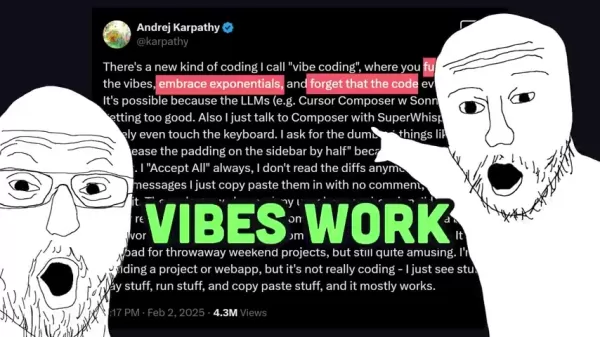
Levels has shared his experiences and strategies with the indie hacker community, demonstrating how vibe coding can help build viable software products with limited resources. His success stories, such as developing a real-time flight simulator MMO with JavaScript, highlight the potential of vibe coding for entrepreneurs and small teams.
Essential Rules for Effective Vibe Coding
Rule 1: Choose the Right Tech Stack
Selecting the right tech stack is crucial for successful vibe coding. The stack should be popular, simple, and well-documented, making it easier for AI tools to generate and optimize code. A suitable tech stack ensures that AI models can leverage existing knowledge and resources for more efficient development. Popular JavaScript frameworks like React, Express, Tailwind, Redis, and Deno are ideal for web development.
Choosing a stack with a large community ensures that AI tools have ample training data and examples to draw from, increasing the quality and reliability of the generated code.
Rule 2: Master Git for Version Control
Version control is essential in software development, and mastering Git is vital for managing and safeguarding code. In vibe coding, where AI generates much of the code, robust version control becomes even more critical.
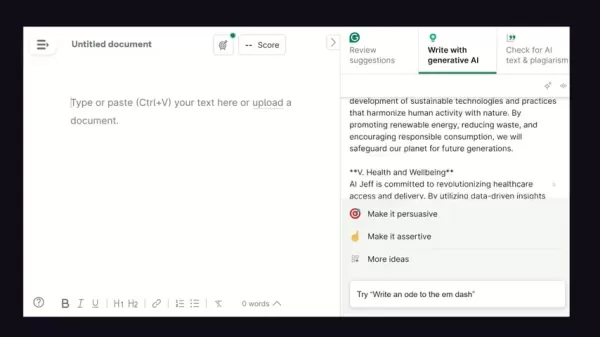
Git allows developers to track changes, collaborate effectively, and revert to previous versions if necessary. It provides a safety net when AI introduces errors or unintended changes, enabling developers to monitor modifications, merge generated code with manual changes, and restore the codebase to a stable state if needed. Using Git ensures that developers maintain control over the codebase, even when heavily relying on AI-generated code.
Rule 3: Think Like a Product Manager
Adopting a product manager mindset is key to guiding AI effectively in vibe coding. Instead of focusing solely on coding, developers should consider the overall product vision, requirements, and user needs. This perspective ensures that AI-generated code aligns with product goals and delivers value to users.
Thinking like a product manager involves defining requirements, breaking down tasks, providing context, and prioritizing tasks. By taking on this role, developers can guide AI to produce code that meets strategic objectives, resulting in more innovative and user-centric software solutions.
Vibe Coding Tools and Platforms: Pricing Overview
Cost Analysis of Vibe Coding Solutions
Vibe coding relies on various AI-powered tools, each with its own pricing structure. Understanding these costs is essential for developers to make informed decisions and optimize their budget while maximizing the benefits of vibe coding.
Here's a look at the pricing structures for some essential vibe coding tools:
- Cursor: Offers a free plan with limited features, suitable for individual developers and small projects. Paid plans provide additional capabilities like enhanced code generation and collaboration features.
- Bolt: Pricing varies based on the number of projects and users. Subscription plans offer different tiers of access, catering to both individual developers and larger teams.
- Grammarly: Provides a free version with basic grammar and spelling checks. Grammarly Premium offers advanced writing suggestions and features, ideal for professionals seeking high-quality writing assistance.
By carefully evaluating these costs, developers can effectively manage their budget while leveraging the full potential of vibe coding tools.
Vibe Coding: Weighing the Advantages and Disadvantages
Pros
- Increased Productivity: Automates repetitive tasks, freeing developers to focus on creativity.
- Reduced Development Time: Accelerates the coding process, shortening project timelines.
- Improved Code Quality: AI tools help identify and fix errors, leading to more robust software.
- Enhanced Collaboration: Facilitates teamwork with real-time code sharing and automated version control.
Cons
- Dependency on AI: Over-reliance on AI can reduce developers' coding skills.
- Security Risks: AI-generated code may introduce vulnerabilities if not properly vetted.
- Ethical Concerns: Potential biases in AI algorithms can lead to unfair or discriminatory outcomes.
- Initial Investment: There's a cost associated with adopting vibe coding tools.
Core Features of Vibe Coding Tools
Key Capabilities of Leading Vibe Coding Tools
Vibe coding tools are designed to augment and streamline the software development process, offering features that improve code quality, increase productivity, and foster collaboration. Understanding these core capabilities can help developers choose the right tools for their needs.
Essential features include:
- AI-Powered Code Generation: Automatically generates code snippets based on natural language descriptions, reducing the need for manual coding.
- Intelligent Code Completion: Provides suggestions for completing code statements, improving coding speed and accuracy.
- Automated Debugging: Identifies and fixes code errors automatically, minimizing debugging time.
- Real-Time Collaboration: Enables multiple developers to work on the same codebase simultaneously, facilitating teamwork and knowledge sharing.
- Code Optimization: Analyzes and optimizes code for performance, ensuring efficient application execution.
- Version Control Integration: Seamlessly integrates with version control systems like Git, allowing effective tracking and management of code changes.
- Customizable Workflows: Allows developers to tailor the development process to their specific preferences and requirements.
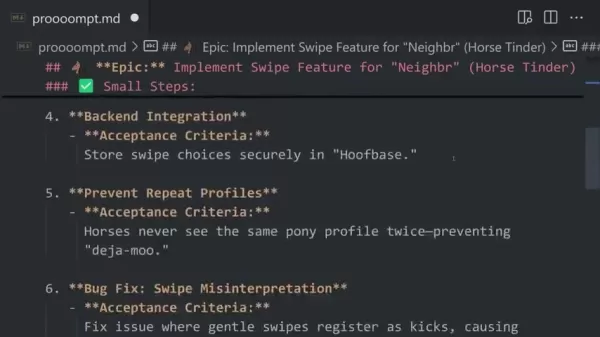
These features enhance the software development process, making it more efficient, collaborative, and innovative, enabling developers to create high-quality software more quickly and effectively.
Use Cases for Vibe Coding
Real-World Applications of Vibe Coding
Vibe coding is versatile and applicable to various software development scenarios across different industries and project types. Understanding these use cases can help developers identify opportunities to leverage vibe coding in their projects.
Common use cases include:
- Web Application Development: Building dynamic and interactive web applications more efficiently with AI-generated code and automated testing.
- Mobile App Development: Creating mobile apps for various platforms, streamlining development and reducing time to market.
- Data Analysis and Machine Learning: Developing data analysis pipelines and machine learning models more quickly with AI-powered code generation.
- Game Development: Streamlining game development processes by automating code generation for repetitive tasks, allowing focus on gameplay and design.
- Enterprise Software Development: Enhancing enterprise software development with AI-driven code optimization, ensuring scalability and reliability.
- Open Source Projects: Contributing to open source projects more efficiently with AI-assisted code generation and collaboration tools.
These diverse use cases highlight the versatility of vibe coding and its potential to transform software development across various domains. By leveraging AI tools and adopting a product-focused mindset, developers can create high-quality solutions that meet evolving user and industry needs.
Frequently Asked Questions About Vibe Coding
What is the primary goal of vibe coding?
The primary goal of vibe coding is to enhance software development by leveraging AI-powered tools, allowing developers to focus on high-level concepts and strategic problem-solving. This approach aims to streamline the development process, reduce manual effort, and foster innovation, becoming increasingly popular in March 2025 with advancements in AI technology.
Which tools are essential for effective vibe coding?
Essential tools for vibe coding include AI-powered code generation platforms, intelligent code completion tools, automated debugging solutions, and real-time collaboration platforms. Popular tools mentioned include Cursor, Bolt, Windsurf, and Grammarly. Version control tools like Git are also crucial for tracking changes and maintaining control over the codebase.
How can developers ensure high-quality code when using vibe coding?
Developers can ensure high-quality code by choosing a popular and simple tech stack, mastering version control with Git, adopting a product manager mindset to define clear requirements, and carefully guiding AI to produce deterministic results. Using AI writing assistants like Grammarly to improve code documentation is also beneficial.
Why is Git so important for Vibe Coding?
Git is essential for vibe coding because it allows developers to track modifications made by AI, collaborate effectively with other developers, and revert changes if AI introduces problems. This provides a robust way to maintain control over the codebase.
What does the future hold for the process of Vibe Coding?
As technology continues to advance, vibe coding is expected to evolve. Increased automation, smarter AI, and better collaboration between humans and machines will enable developers to create products at an accelerated pace while producing higher-quality software.
Related article
 Effortlessly Chat with PDFs Using Gemini API, Langchain, and Chroma DB Integration
Transform your PDF documents into conversational partners with Retrieval-Augmented Generation (RAG) technology. This comprehensive guide demonstrates how to create an intelligent Python system that lets you interact with your PDFs using Gemini API's
Effortlessly Chat with PDFs Using Gemini API, Langchain, and Chroma DB Integration
Transform your PDF documents into conversational partners with Retrieval-Augmented Generation (RAG) technology. This comprehensive guide demonstrates how to create an intelligent Python system that lets you interact with your PDFs using Gemini API's
 Design Eye-Catching Coloring Book Covers Using Leonardo AI
Looking to design eye-catching coloring book covers that grab attention in Amazon's competitive KDP marketplace? Leonardo AI can help you create professional-grade, visually appealing covers that drive sales. Follow our expert techniques to craft stu
Design Eye-Catching Coloring Book Covers Using Leonardo AI
Looking to design eye-catching coloring book covers that grab attention in Amazon's competitive KDP marketplace? Leonardo AI can help you create professional-grade, visually appealing covers that drive sales. Follow our expert techniques to craft stu
 YouTube Integrates Veo 3 AI Video Tool Directly Into Shorts Platform
YouTube Shorts to Feature Veo 3 AI Video Model This SummerYouTube CEO Neal Mohan revealed during his Cannes Lions keynote that the platform's cutting-edge Veo 3 AI video generation technology will debut on YouTube Shorts later this summer. This follo
Comments (7)
0/200
YouTube Integrates Veo 3 AI Video Tool Directly Into Shorts Platform
YouTube Shorts to Feature Veo 3 AI Video Model This SummerYouTube CEO Neal Mohan revealed during his Cannes Lions keynote that the platform's cutting-edge Veo 3 AI video generation technology will debut on YouTube Shorts later this summer. This follo
Comments (7)
0/200
![NicholasGonzález]() NicholasGonzález
NicholasGonzález
 August 7, 2025 at 2:33:00 AM EDT
August 7, 2025 at 2:33:00 AM EDT
This vibe coding thing sounds wild! Like letting AI be your coding DJ while you just vibe to the creative flow. 🤯 Wonder how it handles messy legacy code though?


 0
0
![BrianBaker]() BrianBaker
BrianBaker
 August 4, 2025 at 2:48:52 AM EDT
August 4, 2025 at 2:48:52 AM EDT
This vibe coding thing sounds like a game-changer! Letting AI do the heavy lifting while devs just vibe with ideas? Count me in! 🚀


 0
0
![WalterMartinez]() WalterMartinez
WalterMartinez
 April 27, 2025 at 3:08:38 AM EDT
April 27, 2025 at 3:08:38 AM EDT
Vibe coding é uma ideia genial! O AI cuida do código e eu só preciso me concentrar na parte criativa. Mas às vezes o resultado não sai como esperado. Ainda assim, vale a pena experimentar. 😊


 0
0
![MichaelThomas]() MichaelThomas
MichaelThomas
 April 27, 2025 at 12:01:02 AM EDT
April 27, 2025 at 12:01:02 AM EDT
This vibe coding thing sounds wild! It's like giving your brain a vacation while the AI does all the heavy lifting. I tried it out, and honestly, my code felt more 'me' than ever before. It’s not perfect yet, but the potential is through the roof. 🚀


 0
0
![BruceSmith]() BruceSmith
BruceSmith
 April 26, 2025 at 9:05:15 PM EDT
April 26, 2025 at 9:05:15 PM EDT
Vibe coding parece interesante, pero no siempre entiendo cómo funciona exactamente. Sin embargo, cuando sí funciona, es increíble cómo el código sale tan natural. ¡Esperemos que mejore! 🤔


 0
0
![GaryWilson]() GaryWilson
GaryWilson
 April 26, 2025 at 5:18:47 PM EDT
April 26, 2025 at 5:18:47 PM EDT
비브 코딩은 개발자들에게 새로운 세상을 열어주는 것 같아요. 하지만 AI가 모든 걸 다 잘하진 않더라고요. 그래도 이 기술이 발전하면 정말 멋진 프로젝트를 만들 수 있을 거예요. 😎


 0
0
In March 2025, a revolutionary concept known as vibe coding took the programming world by storm. This idea, coined by the former OpenAI researcher Andrej Karpathy, encourages developers to immerse themselves in the creative process, letting AI handle the nitty-gritty of coding. Vibe coding is reshaping how software is developed by leveraging advanced AI tools to streamline the process. But what exactly is vibe coding, and how can developers make the most of it? Let's dive into this innovative approach, its key players, essential tools, and the rules that ensure its success.
Understanding Vibe Coding and Its Origins
What is Vibe Coding?
Vibe coding, a term brought into the spotlight by Andrej Karpathy, marks a significant shift in software development. It's all about embracing an intuitive, AI-assisted method where developers focus on the big picture, leaving the detailed coding to AI. This approach emphasizes the creative process, allowing developers to trust AI tools to translate high-level ideas into functional code. The goal? To minimize the gap between conceptualizing and executing, enabling faster and more efficient innovation.
The heart of vibe coding lies in harnessing AI to its fullest, freeing developers from mundane tasks and allowing them to concentrate on strategic thinking and problem-solving. It creates a synergy between humans and AI, making the development process more intuitive and streamlined. Unlike traditional coding, which focuses on meticulous syntax and manual debugging, vibe coding relies on the intelligence of AI to generate and refine code. It's not just about writing code; it's about using AI to build software that aligns with a developer's vision, making software creation faster, more accessible, and more enjoyable.

The Rise of Vibe Coding in 2025
In March 2025, the programming world witnessed a surge in the adoption of vibe coding, driven by advancements in AI technology and the increasing availability of AI-powered tools. This wasn't just a fleeting trend; it was a fundamental shift in software development and maintenance.
Several factors fueled this rapid adoption:
- Improved AI Capabilities: AI models became more sophisticated, capable of generating optimized, functional code. Tools like Cursor and Bolt significantly reduced the need for manual coding.
- Accessibility of AI Tools: AI development platforms became more user-friendly, making vibe coding accessible to developers of all skill levels.
- Increased Productivity: Developers found that vibe coding boosted their productivity by automating repetitive tasks and minimizing debugging time, allowing them to focus on more creative aspects of development.
- Growing Community Support: A vibrant community of vibe coders emerged, sharing best practices, tools, and insights, which fostered rapid learning and innovation.
- Influence of Key Figures: Influential tech personalities like Andrej Karpathy and Peter Levels championed vibe coding, promoting its benefits and inspiring others to adopt this new approach.
As these elements came together, vibe coding evolved from a niche concept to a mainstream approach, transforming the landscape of software development and ushering in a new era of AI-powered innovation.
Key Figures in the Vibe Coding Movement
Andrej Karpathy: The Visionary Behind Vibe Coding
Andrej Karpathy, a leading figure in artificial intelligence, is the mastermind behind vibe coding. With a background as a former researcher at OpenAI, Karpathy's insights have significantly influenced software development. He believes that AI can enhance human capabilities in creating software, envisioning a future where developers focus on high-level concepts while AI handles the detailed coding.

Karpathy's advocacy for vibe coding has inspired many developers to embrace AI tools and explore new, AI-driven approaches. His influence extends beyond theory; he has also been instrumental in developing practical tools and techniques that are central to vibe coding. His vision continues to drive innovation, encouraging developers to harness AI for more efficient, accessible, and creative software solutions.
Peter Levels: The Indie Hacker Embracing Vibe Coding
Peter Levels, a prominent indie hacker and entrepreneur, has become a key figure in the vibe coding movement. Known for his pragmatic approach to building software, Levels has showcased the power of vibe coding through real-world applications. His focus on speed, efficiency, and leveraging available tools aligns perfectly with vibe coding principles.

Levels has shared his experiences and strategies with the indie hacker community, demonstrating how vibe coding can help build viable software products with limited resources. His success stories, such as developing a real-time flight simulator MMO with JavaScript, highlight the potential of vibe coding for entrepreneurs and small teams.
Essential Rules for Effective Vibe Coding
Rule 1: Choose the Right Tech Stack
Selecting the right tech stack is crucial for successful vibe coding. The stack should be popular, simple, and well-documented, making it easier for AI tools to generate and optimize code. A suitable tech stack ensures that AI models can leverage existing knowledge and resources for more efficient development. Popular JavaScript frameworks like React, Express, Tailwind, Redis, and Deno are ideal for web development.
Choosing a stack with a large community ensures that AI tools have ample training data and examples to draw from, increasing the quality and reliability of the generated code.
Rule 2: Master Git for Version Control
Version control is essential in software development, and mastering Git is vital for managing and safeguarding code. In vibe coding, where AI generates much of the code, robust version control becomes even more critical.

Git allows developers to track changes, collaborate effectively, and revert to previous versions if necessary. It provides a safety net when AI introduces errors or unintended changes, enabling developers to monitor modifications, merge generated code with manual changes, and restore the codebase to a stable state if needed. Using Git ensures that developers maintain control over the codebase, even when heavily relying on AI-generated code.
Rule 3: Think Like a Product Manager
Adopting a product manager mindset is key to guiding AI effectively in vibe coding. Instead of focusing solely on coding, developers should consider the overall product vision, requirements, and user needs. This perspective ensures that AI-generated code aligns with product goals and delivers value to users.
Thinking like a product manager involves defining requirements, breaking down tasks, providing context, and prioritizing tasks. By taking on this role, developers can guide AI to produce code that meets strategic objectives, resulting in more innovative and user-centric software solutions.
Vibe Coding Tools and Platforms: Pricing Overview
Cost Analysis of Vibe Coding Solutions
Vibe coding relies on various AI-powered tools, each with its own pricing structure. Understanding these costs is essential for developers to make informed decisions and optimize their budget while maximizing the benefits of vibe coding.
Here's a look at the pricing structures for some essential vibe coding tools:
- Cursor: Offers a free plan with limited features, suitable for individual developers and small projects. Paid plans provide additional capabilities like enhanced code generation and collaboration features.
- Bolt: Pricing varies based on the number of projects and users. Subscription plans offer different tiers of access, catering to both individual developers and larger teams.
- Grammarly: Provides a free version with basic grammar and spelling checks. Grammarly Premium offers advanced writing suggestions and features, ideal for professionals seeking high-quality writing assistance.
By carefully evaluating these costs, developers can effectively manage their budget while leveraging the full potential of vibe coding tools.
Vibe Coding: Weighing the Advantages and Disadvantages
Pros
- Increased Productivity: Automates repetitive tasks, freeing developers to focus on creativity.
- Reduced Development Time: Accelerates the coding process, shortening project timelines.
- Improved Code Quality: AI tools help identify and fix errors, leading to more robust software.
- Enhanced Collaboration: Facilitates teamwork with real-time code sharing and automated version control.
Cons
- Dependency on AI: Over-reliance on AI can reduce developers' coding skills.
- Security Risks: AI-generated code may introduce vulnerabilities if not properly vetted.
- Ethical Concerns: Potential biases in AI algorithms can lead to unfair or discriminatory outcomes.
- Initial Investment: There's a cost associated with adopting vibe coding tools.
Core Features of Vibe Coding Tools
Key Capabilities of Leading Vibe Coding Tools
Vibe coding tools are designed to augment and streamline the software development process, offering features that improve code quality, increase productivity, and foster collaboration. Understanding these core capabilities can help developers choose the right tools for their needs.
Essential features include:
- AI-Powered Code Generation: Automatically generates code snippets based on natural language descriptions, reducing the need for manual coding.
- Intelligent Code Completion: Provides suggestions for completing code statements, improving coding speed and accuracy.
- Automated Debugging: Identifies and fixes code errors automatically, minimizing debugging time.
- Real-Time Collaboration: Enables multiple developers to work on the same codebase simultaneously, facilitating teamwork and knowledge sharing.
- Code Optimization: Analyzes and optimizes code for performance, ensuring efficient application execution.
- Version Control Integration: Seamlessly integrates with version control systems like Git, allowing effective tracking and management of code changes.
- Customizable Workflows: Allows developers to tailor the development process to their specific preferences and requirements.

These features enhance the software development process, making it more efficient, collaborative, and innovative, enabling developers to create high-quality software more quickly and effectively.
Use Cases for Vibe Coding
Real-World Applications of Vibe Coding
Vibe coding is versatile and applicable to various software development scenarios across different industries and project types. Understanding these use cases can help developers identify opportunities to leverage vibe coding in their projects.
Common use cases include:
- Web Application Development: Building dynamic and interactive web applications more efficiently with AI-generated code and automated testing.
- Mobile App Development: Creating mobile apps for various platforms, streamlining development and reducing time to market.
- Data Analysis and Machine Learning: Developing data analysis pipelines and machine learning models more quickly with AI-powered code generation.
- Game Development: Streamlining game development processes by automating code generation for repetitive tasks, allowing focus on gameplay and design.
- Enterprise Software Development: Enhancing enterprise software development with AI-driven code optimization, ensuring scalability and reliability.
- Open Source Projects: Contributing to open source projects more efficiently with AI-assisted code generation and collaboration tools.
These diverse use cases highlight the versatility of vibe coding and its potential to transform software development across various domains. By leveraging AI tools and adopting a product-focused mindset, developers can create high-quality solutions that meet evolving user and industry needs.
Frequently Asked Questions About Vibe Coding
What is the primary goal of vibe coding?
The primary goal of vibe coding is to enhance software development by leveraging AI-powered tools, allowing developers to focus on high-level concepts and strategic problem-solving. This approach aims to streamline the development process, reduce manual effort, and foster innovation, becoming increasingly popular in March 2025 with advancements in AI technology.
Which tools are essential for effective vibe coding?
Essential tools for vibe coding include AI-powered code generation platforms, intelligent code completion tools, automated debugging solutions, and real-time collaboration platforms. Popular tools mentioned include Cursor, Bolt, Windsurf, and Grammarly. Version control tools like Git are also crucial for tracking changes and maintaining control over the codebase.
How can developers ensure high-quality code when using vibe coding?
Developers can ensure high-quality code by choosing a popular and simple tech stack, mastering version control with Git, adopting a product manager mindset to define clear requirements, and carefully guiding AI to produce deterministic results. Using AI writing assistants like Grammarly to improve code documentation is also beneficial.
Why is Git so important for Vibe Coding?
Git is essential for vibe coding because it allows developers to track modifications made by AI, collaborate effectively with other developers, and revert changes if AI introduces problems. This provides a robust way to maintain control over the codebase.
What does the future hold for the process of Vibe Coding?
As technology continues to advance, vibe coding is expected to evolve. Increased automation, smarter AI, and better collaboration between humans and machines will enable developers to create products at an accelerated pace while producing higher-quality software.
 Effortlessly Chat with PDFs Using Gemini API, Langchain, and Chroma DB Integration
Transform your PDF documents into conversational partners with Retrieval-Augmented Generation (RAG) technology. This comprehensive guide demonstrates how to create an intelligent Python system that lets you interact with your PDFs using Gemini API's
Effortlessly Chat with PDFs Using Gemini API, Langchain, and Chroma DB Integration
Transform your PDF documents into conversational partners with Retrieval-Augmented Generation (RAG) technology. This comprehensive guide demonstrates how to create an intelligent Python system that lets you interact with your PDFs using Gemini API's
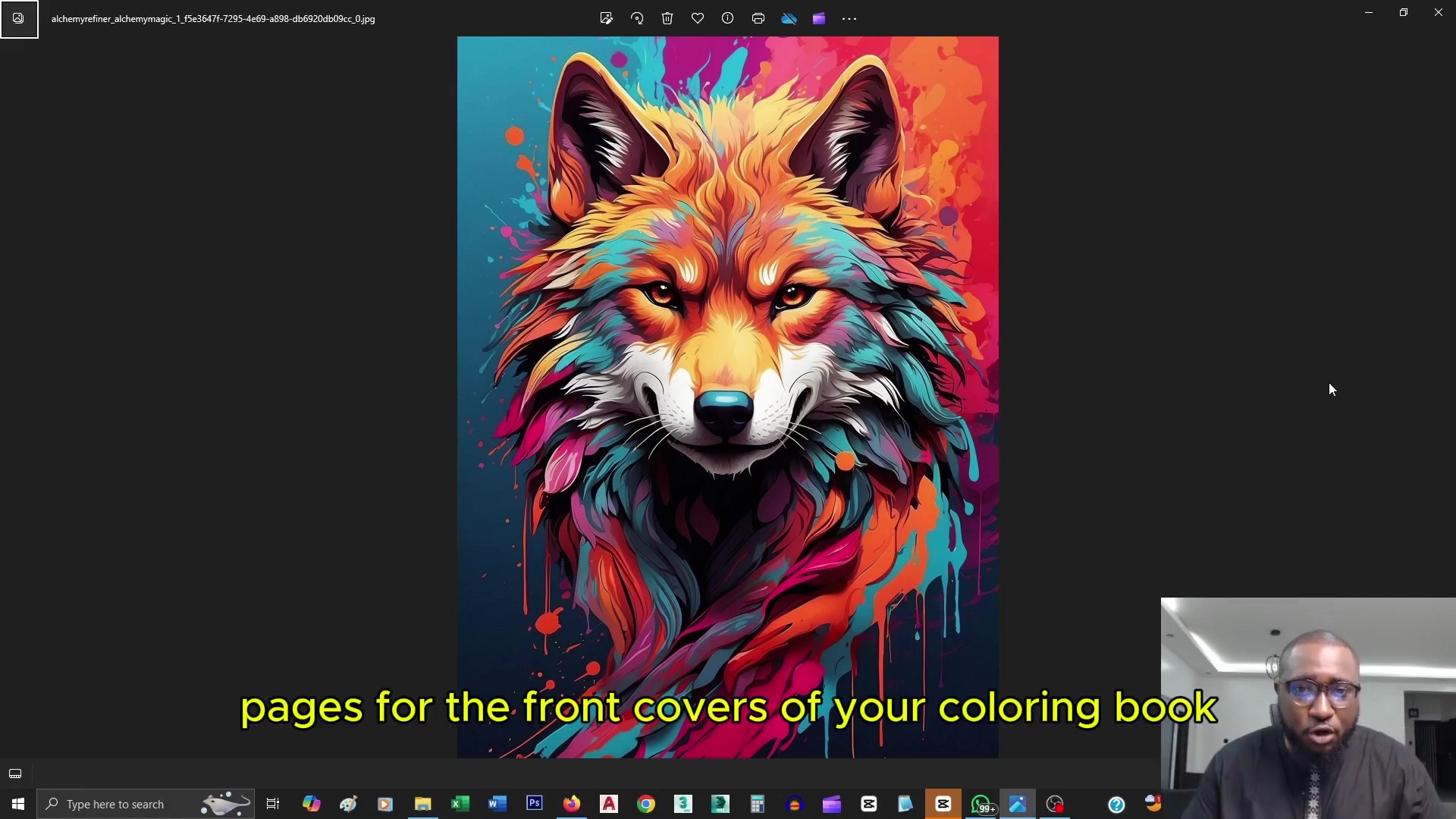 Design Eye-Catching Coloring Book Covers Using Leonardo AI
Looking to design eye-catching coloring book covers that grab attention in Amazon's competitive KDP marketplace? Leonardo AI can help you create professional-grade, visually appealing covers that drive sales. Follow our expert techniques to craft stu
Design Eye-Catching Coloring Book Covers Using Leonardo AI
Looking to design eye-catching coloring book covers that grab attention in Amazon's competitive KDP marketplace? Leonardo AI can help you create professional-grade, visually appealing covers that drive sales. Follow our expert techniques to craft stu
 YouTube Integrates Veo 3 AI Video Tool Directly Into Shorts Platform
YouTube Shorts to Feature Veo 3 AI Video Model This SummerYouTube CEO Neal Mohan revealed during his Cannes Lions keynote that the platform's cutting-edge Veo 3 AI video generation technology will debut on YouTube Shorts later this summer. This follo
YouTube Integrates Veo 3 AI Video Tool Directly Into Shorts Platform
YouTube Shorts to Feature Veo 3 AI Video Model This SummerYouTube CEO Neal Mohan revealed during his Cannes Lions keynote that the platform's cutting-edge Veo 3 AI video generation technology will debut on YouTube Shorts later this summer. This follo
 August 7, 2025 at 2:33:00 AM EDT
August 7, 2025 at 2:33:00 AM EDT
This vibe coding thing sounds wild! Like letting AI be your coding DJ while you just vibe to the creative flow. 🤯 Wonder how it handles messy legacy code though?


 0
0
 August 4, 2025 at 2:48:52 AM EDT
August 4, 2025 at 2:48:52 AM EDT
This vibe coding thing sounds like a game-changer! Letting AI do the heavy lifting while devs just vibe with ideas? Count me in! 🚀


 0
0
 April 27, 2025 at 3:08:38 AM EDT
April 27, 2025 at 3:08:38 AM EDT
Vibe coding é uma ideia genial! O AI cuida do código e eu só preciso me concentrar na parte criativa. Mas às vezes o resultado não sai como esperado. Ainda assim, vale a pena experimentar. 😊


 0
0
 April 27, 2025 at 12:01:02 AM EDT
April 27, 2025 at 12:01:02 AM EDT
This vibe coding thing sounds wild! It's like giving your brain a vacation while the AI does all the heavy lifting. I tried it out, and honestly, my code felt more 'me' than ever before. It’s not perfect yet, but the potential is through the roof. 🚀


 0
0
 April 26, 2025 at 9:05:15 PM EDT
April 26, 2025 at 9:05:15 PM EDT
Vibe coding parece interesante, pero no siempre entiendo cómo funciona exactamente. Sin embargo, cuando sí funciona, es increíble cómo el código sale tan natural. ¡Esperemos que mejore! 🤔


 0
0
 April 26, 2025 at 5:18:47 PM EDT
April 26, 2025 at 5:18:47 PM EDT
비브 코딩은 개발자들에게 새로운 세상을 열어주는 것 같아요. 하지만 AI가 모든 걸 다 잘하진 않더라고요. 그래도 이 기술이 발전하면 정말 멋진 프로젝트를 만들 수 있을 거예요. 😎


 0
0

